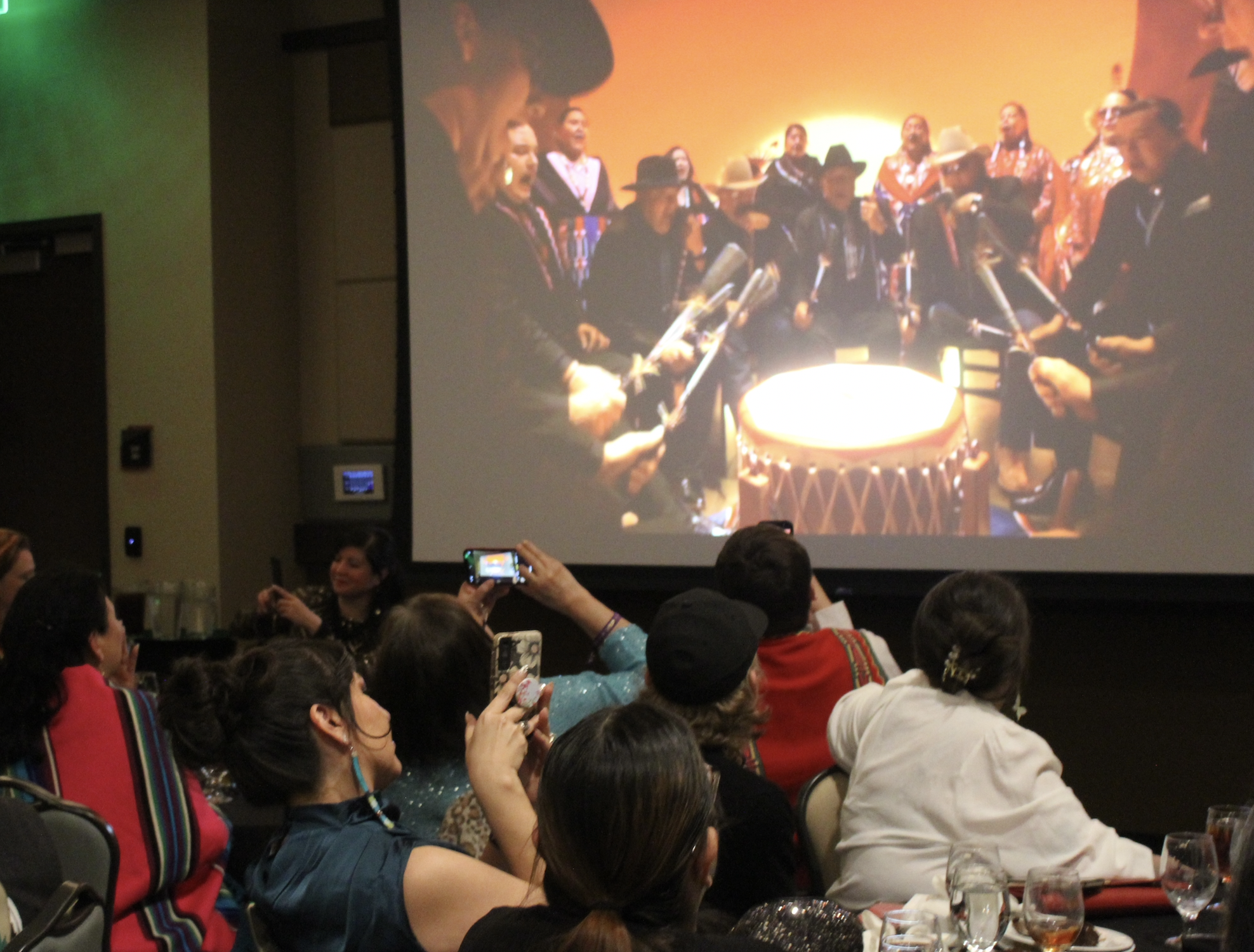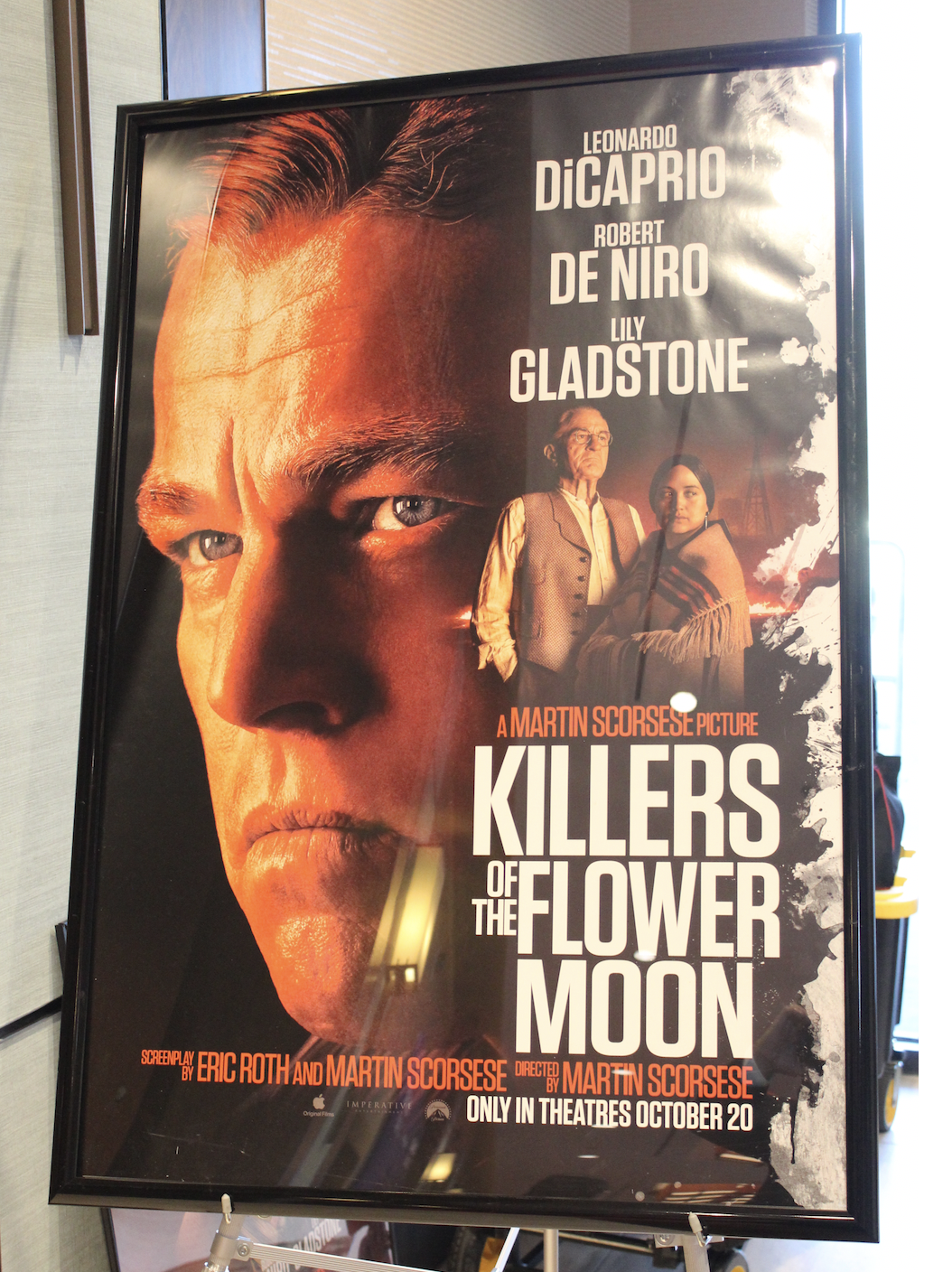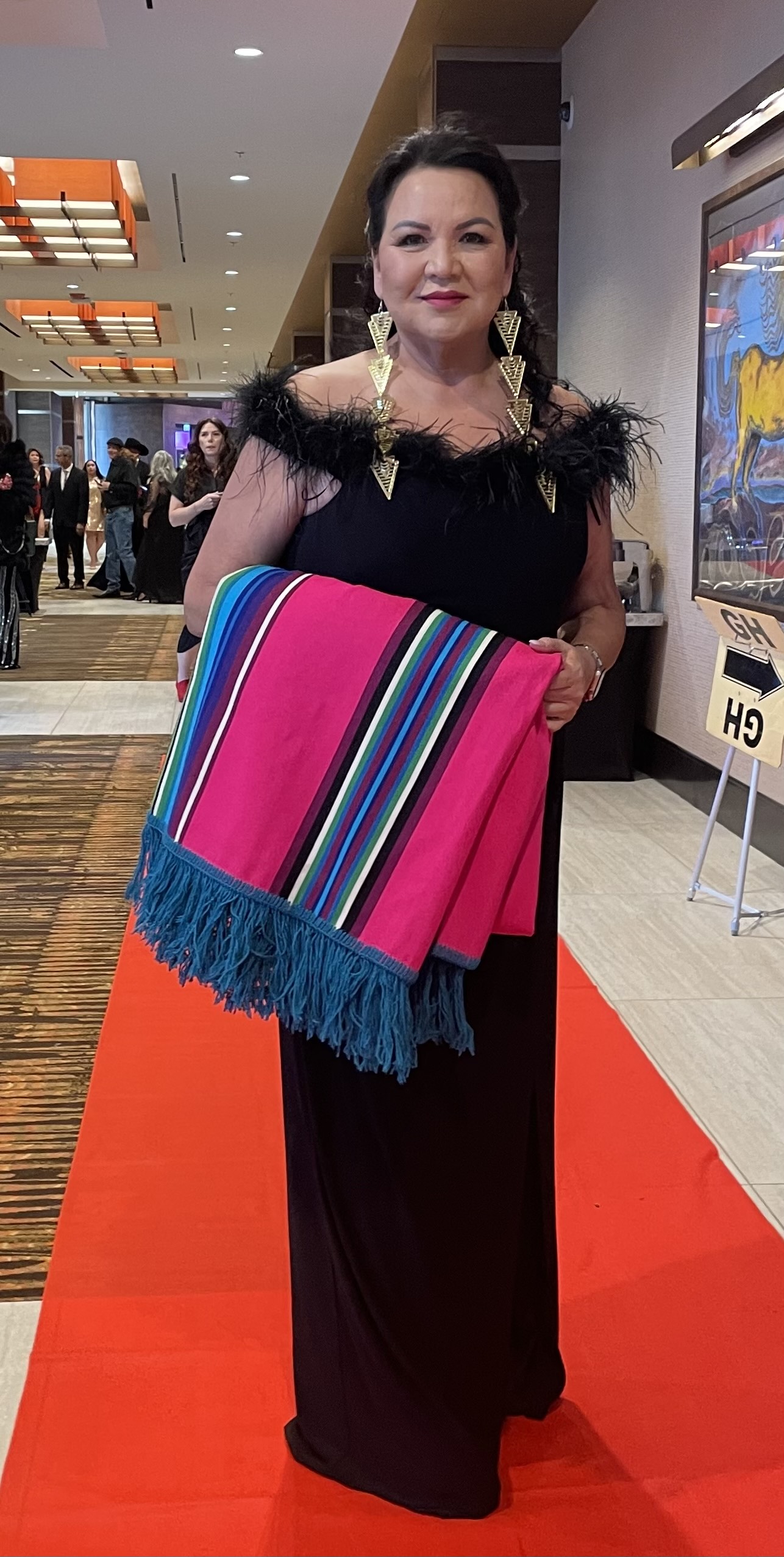
- Details
- By Levi Rickert
OSAGE NATION RESERVATION — A sold-out Oscar watch party spent five hours on Sunday evening watching the 96th Academy Awarrds as the Oscars were handed out throughout the evening. They were there to celebrate the success of "Killers of the Flower Moon." an epic film co-produced and directed by the award-winning Martin Scorsese that told the tragic story of Osage memebers who were murdered or went missing 100 years ago. Some in the crowd were direct decendants of those murdered.
While the film did not win any Oscars, the crowd expressed to Native News Online the film was highly successful in getting the story about what happened on the Osage Nation during the 1920s.
The movie unveils the story of the Osage, who, because of oil on their allotted lands in Oklahoma, became some of the world’s wealthiest people on a per capita basis. During the 1920s, dozens of Osage died under mysterious circumstances. In many cases, those circumstances turned out to be murder. The film concentrates on the family of Mollie Burkhart, played by 37-year-old Lily Gladstone (Blackfeet and Nimíipuu), who had several members of her family murdered, including two sisters.

Gladstone was nominated in the Best Actress category for her powerful portrayal of Mollie Burkhart. "Poor Things" Emma Stone beat her out for the Oscar to the chagrin of the Pawhuska audience. Had Gladstone won, she would have been the first Native American woman to win an Oscar for Best Actress.
Stone, after winning the Oscar, celebrated Gladstone, too. “Lily, I share this with you. I’m in awe of you.”
Many in the crowd were extras in Scorsese that hired among the some 700 Osage and other Native Americans when the film was shot on location on the Osage Nation Reservation in rural Oklahoma, located about an hour from Tulsa.
The. biggest point of excitement for the crowd came when Osage tribal citizen Scott George and the Osage Tribal Singers performed the stage at “Wahzhazhe" that was nominated for Best Song.

Throughout the five-hour Academy Award televised program, the crowd erupted in loud applause every time "Killers of the Flower Moon" was mentioned.
More Stories Like This
Rob Reiner's Final Work as Producer Appears to Address MMIP CrisisVision Maker Media Honors MacDonald Siblings With 2025 Frank Blythe Award
First Tribally Owned Gallery in Tulsa Debuts ‘Mvskokvlke: Road of Strength’
Zuni Youth Enrichment Project and Partners at Ho’n A:wan Productions Launch 8th Annual Delapna:we Project
Chickasaw Holiday Art Market Returns to Sulphur on Dec. 6
Help us defend tribal sovereignty.
At Native News Online, our mission is rooted in telling the stories that strengthen sovereignty and uplift Indigenous voices — not just at year’s end, but every single day.
Because of your generosity last year, we were able to keep our reporters on the ground in tribal communities, at national gatherings and in the halls of Congress — covering the issues that matter most to Indian Country: sovereignty, culture, education, health and economic opportunity.
That support sustained us through a tough year in 2025. Now, as we look to the year ahead, we need your help right now to ensure warrior journalism remains strong — reporting that defends tribal sovereignty, amplifies Native truth, and holds power accountable.
 The stakes couldn't be higher. Your support keeps Native voices heard, Native stories told and Native sovereignty defended.
The stakes couldn't be higher. Your support keeps Native voices heard, Native stories told and Native sovereignty defended.
Stand with Warrior Journalism today.
Levi Rickert (Potawatomi), Editor & Publisher

